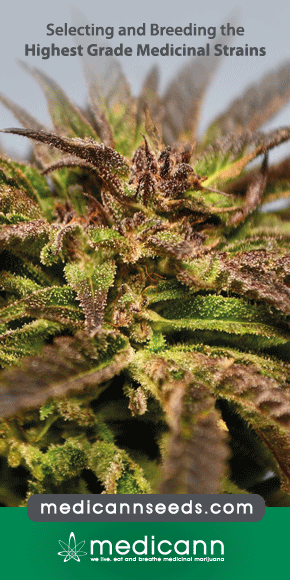Cannabis-based medicines for chronic neuropathic pain in adults
Abstract
BACKGROUND:
This review is one of a series on drugs used to treat chronic neuropathic pain. Estimates of the population prevalence of chronic pain with neuropathic components range between 6% and 10%. Current pharmacological treatment options for neuropathic pain afford substantial benefit for only a few people, often with adverse effects that outweigh the benefits. There is a need to explore other treatment options, with different mechanisms of action for treatment of conditions with chronic neuropathic pain. Cannabis has been used for millennia to reduce pain. Herbal cannabis is currently strongly promoted by some patients and their advocates to treat any type of chronic pain.
OBJECTIVES:
To assess the efficacy, tolerability, and safety of cannabis-based medicines (herbal, plant-derived, synthetic) compared to placebo or conventional drugs for conditions with chronic neuropathic pain in adults.
SEARCH METHODS:
In November 2017 we searched CENTRAL, MEDLINE, Embase, and two trials registries for published and ongoing trials, and examined the reference lists of reviewed articles.
SELECTION CRITERIA:
We selected randomised, double-blind controlled trials of medical cannabis, plant-derived and synthetic cannabis-based medicines against placebo or any other active treatment of conditions with chronic neuropathic pain in adults, with a treatment duration of at least two weeks and at least 10 participants per treatment arm.
DATA COLLECTION AND ANALYSIS:
Three review authors independently extracted data of study characteristics and outcomes of efficacy, tolerability and safety, examined issues of study quality, and assessed risk of bias. We resolved discrepancies by discussion. For efficacy, we calculated the number needed to treat for an additional beneficial outcome (NNTB) for pain relief of 30% and 50% or greater, patient’s global impression to be much or very much improved, dropout rates due to lack of efficacy, and the standardised mean differences for pain intensity, sleep problems, health-related quality of life (HRQoL), and psychological distress. For tolerability, we calculated number needed to treat for an additional harmful outcome (NNTH) for withdrawal due to adverse events and specific adverse events, nervous system disorders and psychiatric disorders. For safety, we calculated NNTH for serious adverse events. Meta-analysis was undertaken using a random-effects model. We assessed the quality of evidence using GRADE and created a ‘Summary of findings’ table.
MAIN RESULTS:
We included 16 studies with 1750 participants. The studies were 2 to 26 weeks long and compared an oromucosal spray with a plant-derived combination of tetrahydrocannabinol (THC) and cannabidiol (CBD) (10 studies), a synthetic cannabinoid mimicking THC (nabilone) (two studies), inhaled herbal cannabis (two studies) and plant-derived THC (dronabinol) (two studies) against placebo (15 studies) and an analgesic (dihydrocodeine) (one study). We used the Cochrane ‘Risk of bias’ tool to assess study quality. We defined studies with zero to two unclear or high risks of bias judgements to be high-quality studies, with three to five unclear or high risks of bias to be moderate-quality studies, and with six to eight unclear or high risks of bias to be low-quality studies. Study quality was low in two studies, moderate in 12 studies and high in two studies. Nine studies were at high risk of bias for study size. We rated the quality of the evidence according to GRADE as very low to moderate.Primary outcomesCannabis-based medicines may increase the number of people achieving 50% or greater pain relief compared with placebo (21% versus 17%; risk difference (RD) 0.05 (95% confidence interval (CI) 0.00 to 0.09); NNTB 20 (95% CI 11 to 100); 1001 participants, eight studies, low-quality evidence). We rated the evidence for improvement in Patient Global Impression of Change (PGIC) with cannabis to be of very low quality (26% versus 21%;RD 0.09 (95% CI 0.01 to 0.17); NNTB 11 (95% CI 6 to 100); 1092 participants, six studies). More participants withdrew from the studies due to adverse events with cannabis-based medicines (10% of participants) than with placebo (5% of participants) (RD 0.04 (95% CI 0.02 to 0.07); NNTH 25 (95% CI 16 to 50); 1848 participants, 13 studies, moderate-quality evidence). We did not have enough evidence to determine if cannabis-based medicines increase the frequency of serious adverse events compared with placebo (RD 0.01 (95% CI -0.01 to 0.03); 1876 participants, 13 studies, low-quality evidence).Secondary outcomesCannabis-based medicines probably increase the number of people achieving pain relief of 30% or greater compared with placebo (39% versus 33%; RD 0.09 (95% CI 0.03 to 0.15); NNTB 11 (95% CI 7 to 33); 1586 participants, 10 studies, moderate quality evidence). Cannabis-based medicines may increase nervous system adverse events compared with placebo (61% versus 29%; RD 0.38 (95% CI 0.18 to 0.58); NNTH 3 (95% CI 2 to 6); 1304 participants, nine studies, low-quality evidence). Psychiatric disorders occurred in 17% of participants using cannabis-based medicines and in 5% using placebo (RD 0.10 (95% CI 0.06 to 0.15); NNTH 10 (95% CI 7 to 16); 1314 participants, nine studies, low-quality evidence).We found no information about long-term risks in the studies analysed.Subgroup analysesWe are uncertain whether herbal cannabis reduces mean pain intensity (very low-quality evidence). Herbal cannabis and placebo did not differ in tolerability (very low-quality evidence).
AUTHORS’ CONCLUSIONS:
The potential benefits of cannabis-based medicine (herbal cannabis, plant-derived or synthetic THC, THC/CBD oromucosal spray) in chronic neuropathic pain might be outweighed by their potential harms. The quality of evidence for pain relief outcomes reflects the exclusion of participants with a history of substance abuse and other significant comorbidities from the studies, together with their small sample sizes.
Source:Pubmed



